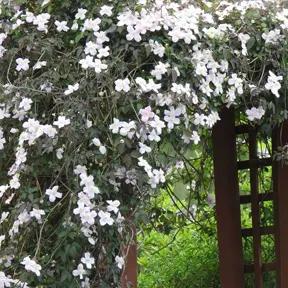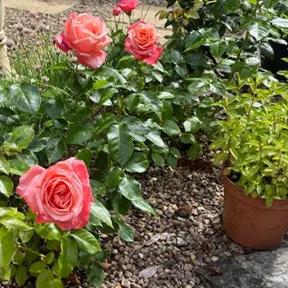Burford Chinese Wisteria
Wisteria x valderi
- Light lilac & purple flowers in May-June
- Macrobotrys Group
- Will grow to 8m x 6m
- Lovely sweet perfume
- Fully hardy
- RHS Award of Garden Merit
Description
Wisteria x valderi Burford
Beautiful pale lilac & purple flowers in May-June, sweetly scented, held in strings (racemes) almost half a metre long. Bronze new leaves, golden Autumn colour. Burford Wisteria can also be trained as a specimen, on a frame in a large pot or planter, perfect for an entrance or in a sitting area.
Browse our variety of wisteria or our full range of climbing plants.
Features:
- Large deciduous healthy climber
- Light lilac & purple flowers in May-June
- Will grow to 8m x 6m
- Lovely sweet perfume
- Fully hardy
- Sun or dappled shade
- Clockwise twining
- RHS Award of Garden Merit
Growing Burford Wisteria
It will need sturdy support and so a pergola, pillar or wall with vine eyes and wires, spaced at 12" distances, will work well. It will also grow over established trees as long as it is kept in check.
It is fully hardy, but strong winds will damage the leaves and flowers, so a sheltered site is best. It will need a fertile, moist but well-drained soil and prefers sun, but dappled shade is fine.
Did You Know?
The classification of this variety changed to Wisteria floribunda (Macrobotrys Group) 'Burford' in 2016, but the RHS still uses the older classification as the main name and lists the new name as a synonym, so perhaps the respective taxonomy factions are still duking it out in the car park.
Planting Instructions
How to grow Wisteria x valderi Burford:
It will need a fertile, moist well-drained soil and a good root run. Plant in a hole substantially larger than the rootball and backfill with a multipurpose or suitable garden compost. Firm in well and water well. Mulch around the roots and feed with a general purpose fertiliser in spring and summer.
It will need the support of a pergola, pillar or vine eyes and wires when grown against a wall. The plant is vigorous with strong growth and so the support should be sufficiently sturdy.
It needs pruning twice a year. Two months after flowering the long shoots should be cut back to 5 or 6 buds from the stem and then, in mid-winter, it should be cut back again to 2 or 3 buds from the stem.
Look out for:
Generally disease free although it can be prone, on occasions, to leaf spot and powdery mildew. Watch for yellowing leaves and honeydew (sticky coating on leaves). If these are seen mealybugs may have infested the plant. Treat with a proprietary control.
All parts of the plant are poisonous and will cause severe stomach problems if ingested.
It's Summer Planting Season 2025

Pot Grown & Plug Plants Delivered

Direct from the Nursery Value

No more broken plants in the post!


 1.webp)
 1.webp)
 2.webp)
 3.webp)
 4.webp)




